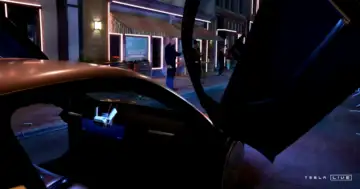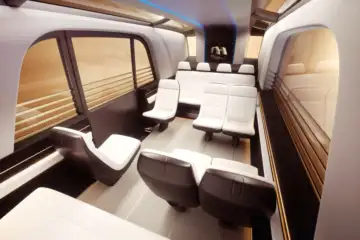With the introduction of the surreal “Cybercab,” a fully autonomous car built without conventional controls like pedals or steering wheels, Elon Musk has once again captivated the attention of the world.
This audacious invention was shown at the We,Robot event as part of Tesla’s larger plan to usher in an era of autonomous vehicles. The launch of the Cybercab marks a paradigm shift in how people will move around in the years to come, in addition to advancing the discussion regarding the potential of autonomous vehicles.
Musk has a clear idea for the Cybercab: Build a car that is fully autonomous and doesn’t need human guidance or control. In contrast to earlier versions of autonomous driving systems, which necessitate that drivers stay vigilant and prepared to take over, the Cybercab seeks to provide a fully hands-off experience. This might completely reinterpret the idea of personal transportation, turning passengers from drivers into just occupants who can unwind, work, or even sleep on their travels.

Tesla’s Cybercab prototype
Musk at the event said, “It will be cheaper than mass transit. Unsupervised, full self-driving capable cars should be available in Texas and California by next year on the Tesla Model 3 and Model Y for starters, Model S and Cybertruck too.” Production of Cybercab optimised for fully autonomous self-driving will start sometime in 2026, he added.
Tesla’s focus on full autonomy aligns with its broader mission to accelerate the world’s transition to sustainable energy. Musk has often spoken about the importance of electric vehicles in reducing carbon emissions, and the Cybercab takes this commitment one step further. “The robotaxi will charge wirelessly using an inductive charger,” Musk mentioned in the event. Tesla has hinted at wireless charging for its electric vehicles in past events and tweets.
Cybercab: Design and features
The Cybercab’s design is futuristic, yet functional. The absence of a steering wheel and pedals opens up more interior space, allowing for a more flexible seating arrangement and additional amenities. While the exact details of the vehicle’s layout have not been fully disclosed, it is expected that the design will focus on maximising comfort and utility for passengers. This makes the Cybercab not just a vehicle, but a reimagined space for travel, work, and relaxation.
In terms of technology, the Cybercab will undoubtedly leverage Tesla’s advanced Full Self-Driving (FSD) software, which uses AI and machine learning to navigate complex traffic environments. Over the years, Tesla has continually improved its autonomous driving systems, and the Cybercab represents the culmination of these efforts.
During the event, Musk pitched the idea of autonomous cars as primarily a time-saver. “Think about the cumulative time that people spend in a car,” he said, “and the time they will get back that they can now spend on their books or watching a movie or doing work or whatever.”
But the challenges persist!
However, challenges remain. Regulatory hurdles, safety concerns, and public acceptance of fully autonomous vehicles need to be addressed. Nevertheless, the Cybercab demonstrates that the era of driverless vehicles is no longer a distant dream. With Musk at the helm, Tesla is at the forefront of making this future a reality. The Cybercab is not just a new vehicle. it’s a glimpse into a new way of life.
Robotaxi is not a recent project. It started quite a while ago, but with a bumpy rollout. Several accidents have been reported due to therobot axis, including blocked vehicles, traffic jams, and even a handful of injuries.
Get the latest news updates and stay informed with FELA NEWS!
Source: India Today

